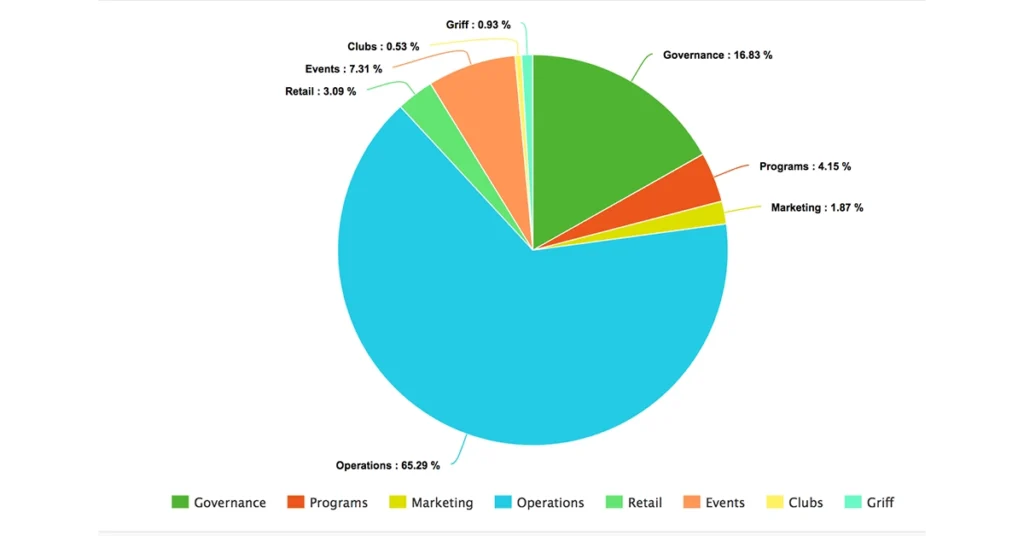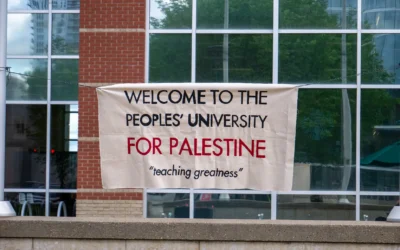Approximately $13 per credit of student fees go toward funding the Students’ Association of MacEwan University (SAMU). While the students’ association brings in some revenue from investments, events, advertising, and other ventures, student fees covered $3.35 million, or 86 per cent, of funding for the 2016-17 SAMU budget.
Amy Beard, SAMU’s current Vice President (VP) Operations and Finance, said a thorough process determines how student dollars are used, and how much funding each line of the budget receives.
Each year, SAMU’s directors and staff start budget talks in January, and then share their proposals with the VP operations and finance. In February, the proposed funding amounts are presented to SAMU’s budget and finance committee.
Beard hopes that SAMU’s departments can find ways to cut costs for the 2017-18 budget.
“We don’t want to raise our fees, so we do have to be as proactive as we can in ensuring that we’re not overspending (and) we’re not budgeting for things we don’t need,” she said, highlighting how SAMU’s fees are relatively high when compared to those of the majority of students’ unions in the province. “We want to make sure we’re being as good as we can for budgeting.”
“There’s always going to be people who think (the fees are) too high,” Beard added. “We definitely don’t want to increase anything anywhere. And that’s kind of the goal of our SAMU building, is we need more of a revenue generation, which we lack.”
Construction on the SAMU building is expected to begin this summer, and once open, the building will likely bring in a significant amount of revenue from the vendors who set up shop there.
The building project is one of many types of proposals put forth to the budget and finance committee each year. Each project has to get approved, at which point the students’ council votes until the budget is unanimously passed in March or April.
Beard says some councillors aren’t entirely comfortable with voting on the budget, possibly due to a lack of training.
“That’s something that we’ve been struggling with, is the training aspect,” she said. “But it’s something we really want to improve and incorporate into their training going forward.”
She suggested a budget workshop as a form of instruction that might be pursued in the future.
Students’ councillors act as a voice for the student body, making it important that the processes behind the budget’s creation be laid out clearly to council.
For now, however, it’s important that the allocation of SAMU’s fees is being made clear to the people who pay them — the students.
We spoke to Beard about each line of the budget and highlighted items that might be particularly interesting to students. Here’s the breakdown:
SAMU budget breakdown

Operations and finance (65.29 per cent) — $2,537,951
General administration: The $1,990,551 associated with this line of the operations and finance section includes all SAMU staff salaries, memberships, sponsorships, office supplies, wellness and appreciation, benefits, professional development funding, and the like.
SAMU building fund: SAMU collects 10 per cent of annual student fees for the building fund. The building is expected to open its doors in 2019.
Retail (3.09 per cent) — $120,210
The $120,210 associated with this section of the budget funds the Students’ Association of MacEwan (SAM) Centre.
Events (7.31 per cent) — $284,000
Each year, SAMU hosts a wide variety of events. The following list highlights a few of SAMU’s most-talked about events.
Staff Holiday Party: Beard said the $14,000 allocated to this staff appreciation party has been called into question, as it appears to be a rather extravagant affair. This year’s holiday party featured a buffet-style dinner, standup comedians, and $50 mall gift cards to staff members who RSVP’d. “We like to offer our staff a certain amount of perks. I think that’s important in ensuring that our staff are happy with their jobs,” she said. “There are ways that we probably could save more money with that, and we’ve kind of been talking to our events department about decreasing the budget.”
Fall Fest: This is one of SAMU’s biggest and most well-attended events. The $80,000 allocated to Fall Fest covers the costs of the performers and various vendor booths that students can attend during the two-day event near the start of each academic year.
Awards Night: For 2016-17, $21,000 was allocated to this annual event, which is attended by about 150 people.
Clubs (0.53 per cent) — $20,730
The majority of the funding associated with this section of the budget supports club events and training.
the griff (0.93 per cent) — $36,100
The $36,100 allocated to our publication goes toward printing and marketing costs, conference fees, and staff appreciation.
Governance and advocacy (16.83 per cent) — $654,171
SAMU’s executive committee and students’ council represent MacEwan students on a provincial, and sometimes federal, scale. The governance and advocacy portion of the budget covers the costs associated with these roles. Here are the highlights:
Executive compensation: All executives receive the same salary and benefits, and each of the five executives receives an hourly-based transition salary, a phone and transit allowance, and professional development funding.
Students’ council: Councillors are paid $60 for each meeting they attend, and receive honorariums for joining committees.
Student conference and club grants: This year, there were 25 club grants available for $2,000 each. Funding may also be provided to students interested in attending conferences related to their studies, though Beard said “it’s not promoted as well as we could promote it, but we do kind of try word of mouth.”
Executive conferences: For the most part, the president and VP external are the executives who attend large-scale conferences. This includes two trips to Ottawa, and one other meeting hosted by a students’ union elsewhere in Canada. The $30,866 associated with this line covers flight, hotel, rental car, and meal costs for the executives attending these conferences.
Executive training retreats: Beard says SAMU has received criticism for its training retreats, partly because some people believe the retreats do not need to take place off campus. In May, incoming and outgoing executives attend a retreat in Sylvan Lake. The following January, they attend a “mid-year refresher” in Banff. “The word ‘retreat’ is probably a bad word for us to use, and that’s something that we’d like to change,” Beard said. “It’s more of a transition in May, and then a refresher in January.”
Programs and services (4.15 per cent) — $161,167
Funding for SAMU’s programs and services is usually based on demand. We spoke with VP Student Life Jason Garcia about the demand for some of the students’ association’s most
noteworthy programs.
Food bank: Demand for this service is high. It is a donation-based service, so the $10,500 allocated to this line of the budget serves the purpose of funding emergency five-to-seven-day rations if there are not enough donations.
Safe Walk: Last year, demand for this service was low, but Garcia said it’s growing. Last academic year, Safe Walk volunteers provided 25 walks to students. This October alone saw 25 walks.
Peer Support: Demand for this service is high. This October, 35 students used Peer Support. SAMU’s resources fund volunteer training, which is extensive and requires police checks. Funding also covers the costs of condoms, deodorant, pregnancy tests, and feminine hygiene products, which are all given to students for free.
The Gray Gallery: Demand for this service is low. Last academic year, there were three student shows in the space.
Marketing and communications (1.87 per cent) — $72,700
Money allocated to this section of the budget is used to promote SAMU’s programs and services.





0 Comments